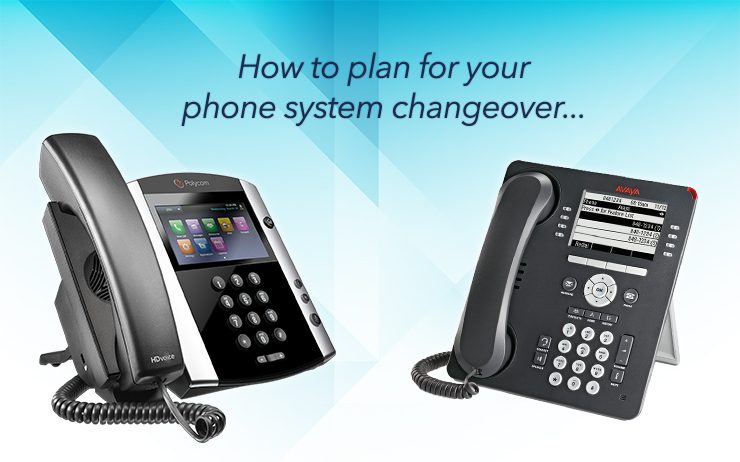Business phone technology has changed a lot over the past few years. This now means small and medium sized businesses have access to features and options normally reserved for large enterprise phone systems.
Now that you have decided on the new phone system your business will adopt, it is important to follow some basic steps to ensure you get the changeover you are hoping for.
- Testing your technology – Trial your new phone system
Most phone system providers have the ability to offer you a trial of the system you are going to implement. Ideally you want to trial it in the comfort of your own office so you can spend time using the new features and ensuring the call quality is satisfactory.
- Maintaining your new system
New systems worth considering will allow you to have a level of self-administration. This means you can save on expensive call-out or remote dial-in fees by doing it yourself.
You should expect to change user names and email addresses for voicemail, move users from one group to another and set up automated reports.
- Does your office IT environment suit your new system – Bandwidth, network switching
Most new phone systems are IP based. This means they will require a minimum of Cat 5 or 6 cabling to operate smoothly. Your IT team or phone maintainer can advise if there are any hidden costs that might arise due to old, outdated phone cabling.
IP phone systems also require a network switch that allows call traffic to be switched smoothly around the office. In many cases a Power of Ethernet (POE) switch is ideal, as it allows the phones to be plugged directly into the network plug without a messy power supply for each phone.
- Keeping your phone numbers
Obviously every business needs to keep their phone numbers. What’s not so obvious is the process of moving your numbers from one provider to another.
Number porting is simple enough. However, there are a number of stages that occur over a 6-to-8 week period.
It is important to get a clear understanding of the milestones and any associated costs from your phone system provider before you agree to move forward.
This can delay your phone system installation and might require numbers to be diverted, which can lead to some downtime on the day of changeover.
- Reducing staff user problems
Staff training is often included in phone system solutions, though exactly what you get might disappoint.
Ensure you receive thorough training on your new phone system and selecte some internal champions that can assist your staff after the trainer has left the building.
The last thing you want is dropped calls, lost calls when transferring or your team falling out of love with your new phone system on day 1.
I recommend an initial training session on day 1, supporting user guides and or video guides, as well as a follow-up session for power users and staff that may have missed the first session.
- Planning for down time
Changing your phone system will incur downtime.
No matter how clever you try to be, it is best to avoid the stress and frustration of cutting your new system over during business hours.
After business hours or weekends are the best option.
You might need to pay a little more or negotiate a little harder to get after hours cutover.
This way your phone system provider can do their work in peace and your staff will arrive the following day to a correctly installed and fully functioning system. Everyone is happy.
Changing your business phone system is a big decision for any business. It will be the cornerstone for your internal and external customers. When planning your changeover, follow these steps to ensure your decision is the right one and make the transition smooth for your whole team.



